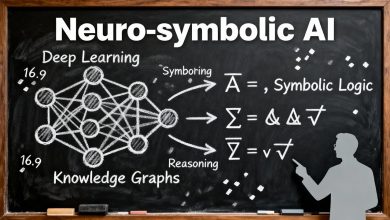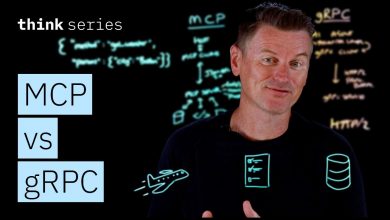Architecting Agent Memory: Principles, Patterns, and Best Practices
In the rapidly evolving field of artificial intelligence, autonomous agents—systems that perceive environments, reason, and act toward goals—are becoming central to applications from personal assistants to industrial automation.
What separates a rudimentary chatbot from a sophisticated agent is memory: the capacity to retain, retrieve, and reason over past experiences, user preferences, and contextual knowledge.
Effective memory architecture transforms agents from stateless responders into stateful collaborators that exhibit continuity, adaptability, and personalization. This article distils the core principles, architectural patterns, and battle-tested best practices for designing memory systems that scale in complexity, latency, and reliability.
The foundation of robust agent memory begins with the separation of concerns across time horizons and semantic roles. Short-term or working memory handles ephemeral context for the current interaction, such as the last few conversation turns or active goals. Long-term or persistent memory, in contrast, durably stores facts, preferences, and episodic events that may be relevant weeks or years later. A third layer, meta-memory, tracks knowledge about the memory system itself, including confidence scores and access patterns. Memory recall should be distinguished as either explicit, where information is directly queried and retrieved through mechanisms like vector similarity, or implicit, where past knowledge subtly influences behavior without surfacing, such as through fine-tuned embeddings. Rather than treating memory as a chronological log, it is far more powerful to model it as a knowledge graph of entities, relations, and events, enabling sophisticated queries like identifying a user’s request immediately preceding a system outage. Memory is not free; engineers must apply economic reasoning to balance storage costs against volume and durability, retrieval costs against latency and compute, and maintenance costs against update frequency. Finally, privacy must be embedded by design, with consent-based storage, differential privacy for aggregated insights, and user-controlled expiration or deletion of sensitive data.
Architecturally, a triple-tier memory hierarchy proves effective in practice. At the top sits working memory, an in-process buffer lasting less than a minute, holding token streams and active goals. This feeds into episodic memory, a mid-term store spanning hours to days, typically backed by a vector database with metadata tags for fast similarity search. The bottom layer is semantic memory, an indefinite store of versioned facts and relationships, often implemented with a knowledge graph augmented by embeddings. This structure supports use cases like a customer support agent that recalls the current ticket in working memory, past user interactions in episodic memory, and unchanging product specifications in semantic memory.
A powerful pattern for integrating memory with large language models is Memory-Augmented Neural Execution (MANE). In this approach, a retrieval head embeds the current query and fetches the k-nearest neighbors from a vector store. A reflection head generates synthetic memories, such as summaries of recent episodes, while a consolidation loop periodically distills episodic content into semantic memory. Code-wise, retrieval might embed a query, query a user-partitioned vector database, and return filtered results, while reflection prompts the language model to summarize a batch of memories into a single consolidated entry. Another biologically inspired pattern is Hierarchical Temporal Memory (HTM), which uses sparse distributed representations across prediction levels—from minute-level events at the base to monthly patterns at the apex—enabling anomaly detection and predictive recall, such as anticipating a user’s 7 AM weather query.
For environments requiring auditability, a write-once, read-many (WORM) episodic log paired with index sidecars ensures immutability of raw events while providing queryable abstractions through vector and graph databases. Key technology choices include vector stores like Pinecone, Weaviate, or Qdrant for similarity search (trading latency for consistency), knowledge graphs like Neo4j or Amazon Neptune for relational expressiveness (trading scale for richness), Redis caches with time-to-live for speed, and orchestration frameworks like LangChain or LlamaIndex for flexibility.
Best practices begin with disciplined memory pruning and decay. Each memory entry should carry a score combining access frequency, recency (often weighted exponentially), and importance derived from user feedback or goal alignment; entries falling below a threshold are evicted. Memory must be versioned with timestamps, agent versions, and source traces to support rollback and policy experimentation. Retrieval should be hybrid, blending dense semantic search with sparse keyword methods (e.g., BM25) and weighting results—say, 70% dense and 30% sparse—to improve recall on technical queries. Compression techniques are essential: large language models can distill ten conversation turns into a single summary, dimensionality reduction like PCA can shrink embeddings for long-term storage, and 8-bit quantization can yield fourfold space savings. When conflicting facts arise, resolve them by prioritizing recency, source authority (user input over agent inference over web data), or explicit user arbitration prompts. Observability is non-negotiable—monitor retrieval latency percentiles, per-user memory bloat, and consolidation success rates to catch degradation early.
Certain anti-patterns must be avoided. Infinite append-only logs lead to out-of-memory crashes; enforce strict quotas and pruning. A single global vector namespace causes topic bleed across users or domains; partition rigorously. Synchronous writes spike latency; persist asynchronously. Omitting confidence scoring invites hallucinated recall; always attach uncertainty metadata.
Consider an enterprise task automation agent managing over ten thousand user tasks with dependencies and deadlines. Working memory holds the current task graph in Redis, episodic memory stores change logs in a combined vector and time-series database, and semantic memory encodes user preferences and organizational policies in a knowledge graph. A nightly consolidation job summarizes patterns, such as “User X prefers email updates.” The outcome is a 92% reduction in repeated questions and response times dropping from three seconds to four hundred milliseconds.
Looking ahead, neuro-symbolic memory will fuse neural retrieval with symbolic reasoning, federated memory will enable privacy-preserving sharing across agents, active forgetting will allow goal-directed erasure of obsolete projects, and energy-based models will score memories by predictive utility.
Architecting agent memory is ultimately about retrieving the right information at the right moment, not merely storing more. By embracing modular hierarchies, cost-aware policies, and hybrid retrieval, engineers can craft agents that feel persistently intelligent. Begin with a simple dual-tier system—a short-term buffer plus a vector store—then iterate under strong observability. The agents of tomorrow will be judged not by reasoning speed alone, but by the depth and fidelity of what they remember.
*Last updated: November 2025*



